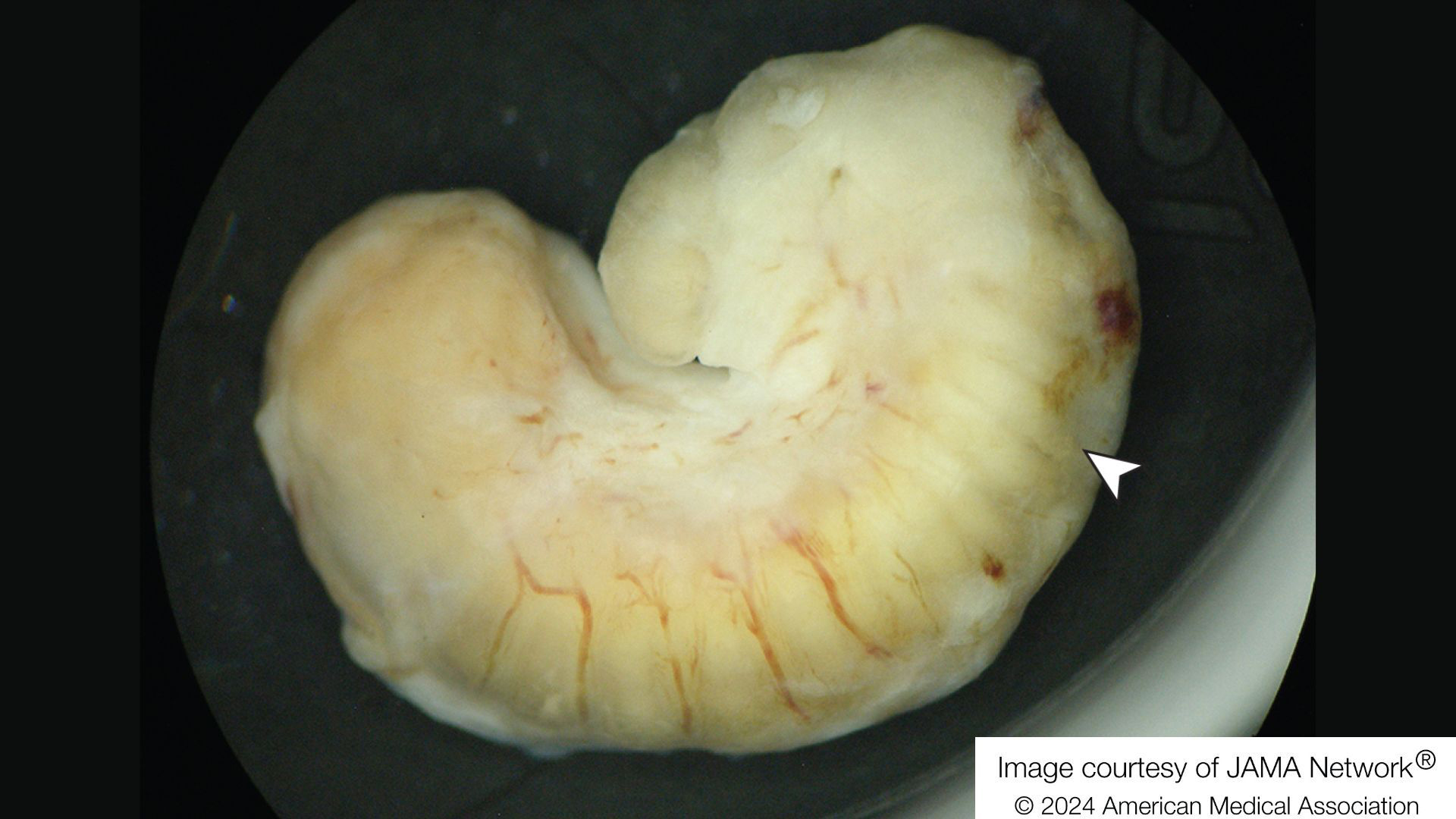Parasite that lived in woman's eye for 2 years likely came from crocodile meat
Doctors described a case of a rare infection called ocular pentastomiasis, which is caused by a parasite known to lay its eggs in snakes.

A mass that had been growing in a woman's eye for two years turned out to be a parasite that sometimes passes from reptiles to humans, doctors say.
The doctors flagged contaminated crocodile meat as a potential source of the rare infection, which may make it the first case of its kind in medical literature, they reported Thursday (April 11) in JAMA Ophthalmology.
The report's authors diagnosed the woman with an infection called "ocular pentastomiasis," a rare eye infection caused by parasites called pentastomids. In this case, a parasite had embedded itself under the conjunctiva, or clear outer membrane, of the patient's left eye. There, it had grown to about 0.4 inch (10 millimeters) long.
Related: Parasitic worms found in man's brain after he likely ate undercooked bacon
The 28-year-old, from Basankusu in Congo, showed no symptoms other than the notable mass in the corner of her eye, her doctors reported. Upon examination, they found the mass could move and surgically removed it, which revealed a pale, C-shaped larva. They shipped the grub off for further analysis, and scientists found that it belonged to a species called Armillifer grandis.
This species, along with another in the genus Armillifer, is known to sometimes cause human infections in Africa. Other types of pentastomid have been reported to infect people in other regions of the world.
Armillifer parasites use snakes as their hosts in the final stage of their life cycle, laying their eggs in the respiratory tracts of various vipers and pythons. These eggs eventually exit the lungs and enter the environment via the snake's mouth or digestive tract. There, they're picked up by a rodent or other small mammal that a snake is likely to eat; they typically develop into larvae in these hosts before getting gobbled up by a snake, thus completing the parasite's life cycle.
Sign up for the Live Science daily newsletter now
Get the world’s most fascinating discoveries delivered straight to your inbox.
Humans can inadvertently pick up A. grandis by eating or drinking food or water contaminated with its eggs. or by having close contact with infected snakes, the case report authors wrote. People are sometimes exposed to the parasites through eating undercooked meat from infected snakes. In this case, though, the woman stated that she had never eaten or handled snakes.
"However, she was used to eating crocodile meat," her doctors wrote. "No case of Armillifer ocular infection has ever been reported in individuals who eat crocodile meat, but crocodiles can be infected by pentastomids." Therefore, there's a possibility the infection happened when the woman ate crocodile meat containing parasite eggs. "This meat could also have been contaminated via infected snake meat on a market stall," the doctors added.
In the rare cases when they end up in people, the parasites most often invade the internal organs and the tissues surrounding them. These infections frequently cause no symptoms, and therefore may be undercounted; they're often spotted when a person is undergoing surgery for something else. On occasion, though, these infections can lead to organ perforation, extreme immune reactions and death.
Eye infections are a rare manifestation of the disease, but they're somewhat easier to spot because they can cause symptoms of redness, pain and vision changes.
Treatment for the infection involves surgically removing the parasites. If doctors simply kill the larvae with antiparasitic drugs, the grubs' carcasses can set off a dangerous immune response in the body, the report authors wrote.
People are typically diagnosed through a visual examination of their tissues and the parasites themselves. Ways to prevent the infection include following hygiene measures, such as wearing gloves and washing hands when in contact with reptiles, as well as avoiding eating undercooked reptile meat.
The doctors say medical practitioners should be on the lookout for other cases.
"Ophthalmologists should consider the diagnosis in patients coming from endemic countries," where this rare disease is known to occur, the doctors wrote. "Higher awareness for this rare but sometimes heavily symptomatic disease seems warranted."
This article is for informational purposes only and is not meant to offer medical advice.
Ever wonder why some people build muscle more easily than others or why freckles come out in the sun? Send us your questions about how the human body works to community@livescience.com with the subject line "Health Desk Q," and you may see your question answered on the website!

Nicoletta Lanese is the health channel editor at Live Science and was previously a news editor and staff writer at the site. She holds a graduate certificate in science communication from UC Santa Cruz and degrees in neuroscience and dance from the University of Florida. Her work has appeared in The Scientist, Science News, the Mercury News, Mongabay and Stanford Medicine Magazine, among other outlets. Based in NYC, she also remains heavily involved in dance and performs in local choreographers' work.









